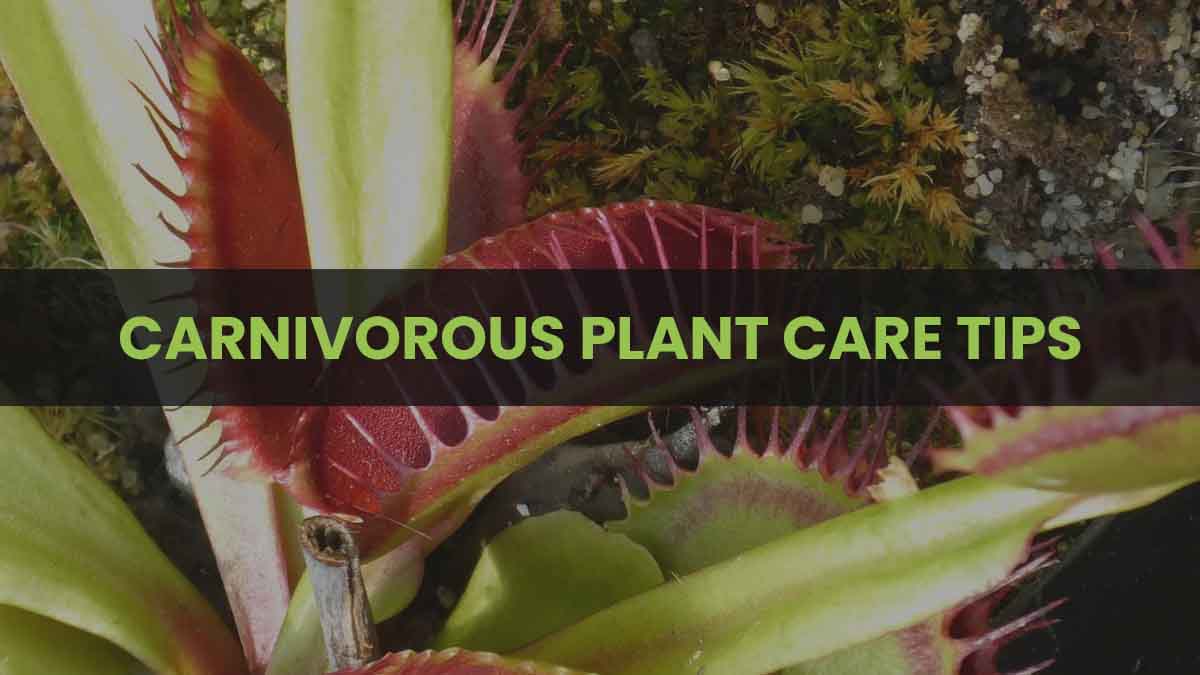Carnivorous plants are unique plants to grow and are often seen as tricky to grow. This perception likely comes from the fact that these plants grow a bit differently from traditional garden plants. Don’t worry though, we have your back and will show you all the carnivorous plant care tips you need to successfully grow these beautiful plants.
Many of these tips deal with creating an ideal environment for your plant. Many carnivorous plants grow in more temperate climates and are native to areas that are wetlands and boggy. If you want to grow happy plants you’ll want to try to mimic this type of environment as closely as possible.
Use The Right Soil
First off, it’s important to make sure that you’re using the right soil. Many carnivorous plants grow in poor soil, which is why they get a lot of their nutrients from insects.
For best results, use a carnivorous plant mix. This is specially formulated to have the right amount of nutrients and also drain quickly enough to not waterlog the plant.
Keep Them Cool In The Winter
As many of these plants grow in temperate climates they enjoy periods of cool weather and dormancy. This is essential to their growth and without it many plants won’t bloom properly the following year.
To do so, move the plant to the coldest room in your house. Depending on your climate you can even move them to a location like a garage or shed.
The timing here can change, but as an example, Venus flytraps need this for about 10 weeks. You shouldn’t worry too much about them getting too cold, many carnivorous plants can withstand freezing temperatures and light frosts.
During this time the plant will need to be watered less as well. We cover water a bit more below, so just remember to hold back compared to the warmer months.
Give Them Enough Water
As noted, these plants tend to grow in boggy and wetland conditions. This means that they like their soil constantly wet.
A good way to achieve this is by filling their saucer with water and letting the soil absorb water as needed. Even then, you should gauge the soil every day and give it extra water if the top feels dry.
As noted above, you can water a bit less during the cooler months when the plant goes dormant.
Give Them The Right Water
When watering, try not to use tap water. The chemicals and additives in most tap water can be harmful to your plants in large quantities.
It’s best to use distilled or filtered water. You can leave tap water out overnight to make it easier for the plants to handle.
Another good option is to collect rainwater. You can use a water barrel or similar setup to capture rainwater for your gardening uses.
Don’t Fertilize Them
A big mistake many first time growers make is using traditional garden fertilizer on their carnivorous plants. These plants get all the nutrients they need from the insects they feed on.
Fertilizing your carnivorous plant can actually kill them. These plants aren’t used to lots of nutrients, so too much is not good for them. Feed them appropriately and you’ll never need to fertilize them.
Feed Them Appropriately
Building on the above, you want to make sure that you’re feeding your plant on the right schedule. Carnivorous plants get all their nutrients from the insects they eat, so you need to make sure they’re getting enough.
This can differ by plant, so figure out what the proper schedule is. Venus flytraps for example need to be fed every other week, while many pitcher plants only need it about every 3-4 weeks.
Don’t Bother Your Plants
This is something to watch especially if you have kids, but plants like the venus flytrap only close a certain amount of times. This means that if you’re poking or prodding the plant to get it to snap shut then you’re limiting the ability for the plant to feed.
It’s best to leave the plant be, and resist the urge to poke the plant outside of its feeding schedule.
Prune Them As Needed
Lastly, like many other plants carnivorous plants need to be pruned and cared for during their growth cycle. Venus flytraps for example will turn black and die, this is completely normal and nothing to worry about.
If you notice this, simply snip off the dead and dying leaves. Note that this is most likely during the dormancy period of the plant. If you’re noticing this during the growing season it may indicate a problem. Make sure you’re watering, feeding, and getting enough light to your plant.
Carnivorous Plant Care
Carnivorous plants are often seen as difficult to grow, but that doesn’t have to be the case. It just requires giving them the right environment to grow in. If you’re growing like a traditional plant you might run into trouble, use the tips above to grow them correctly and you’ll find it’s much easier to get beautiful plants.
If you’re looking for some options, check out our article on 3 popular carnivorous plants you can grow indoors.







